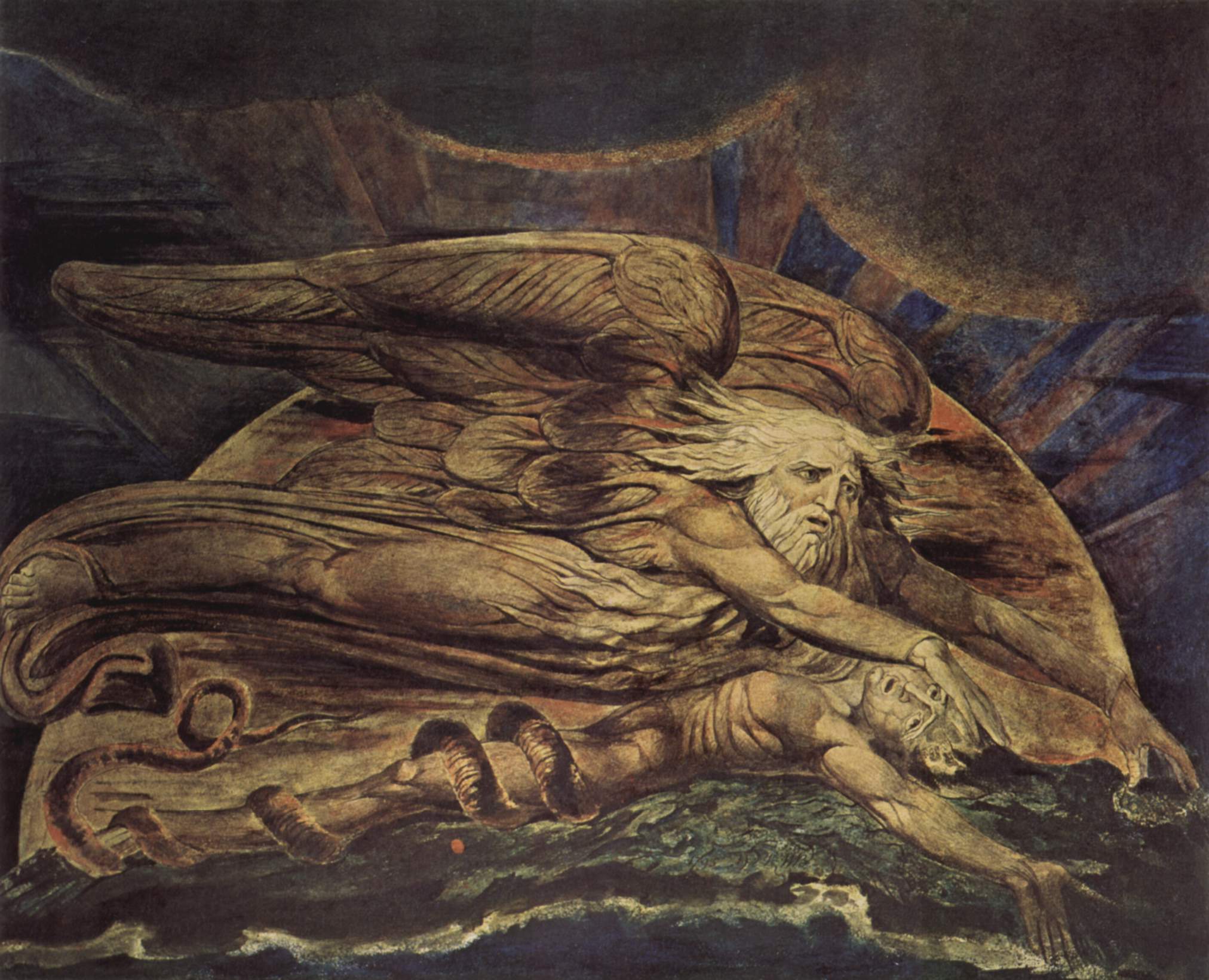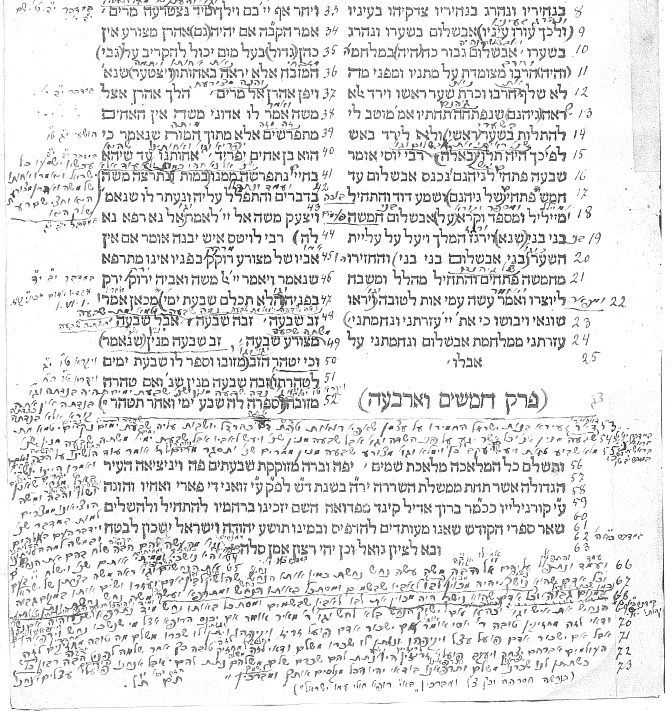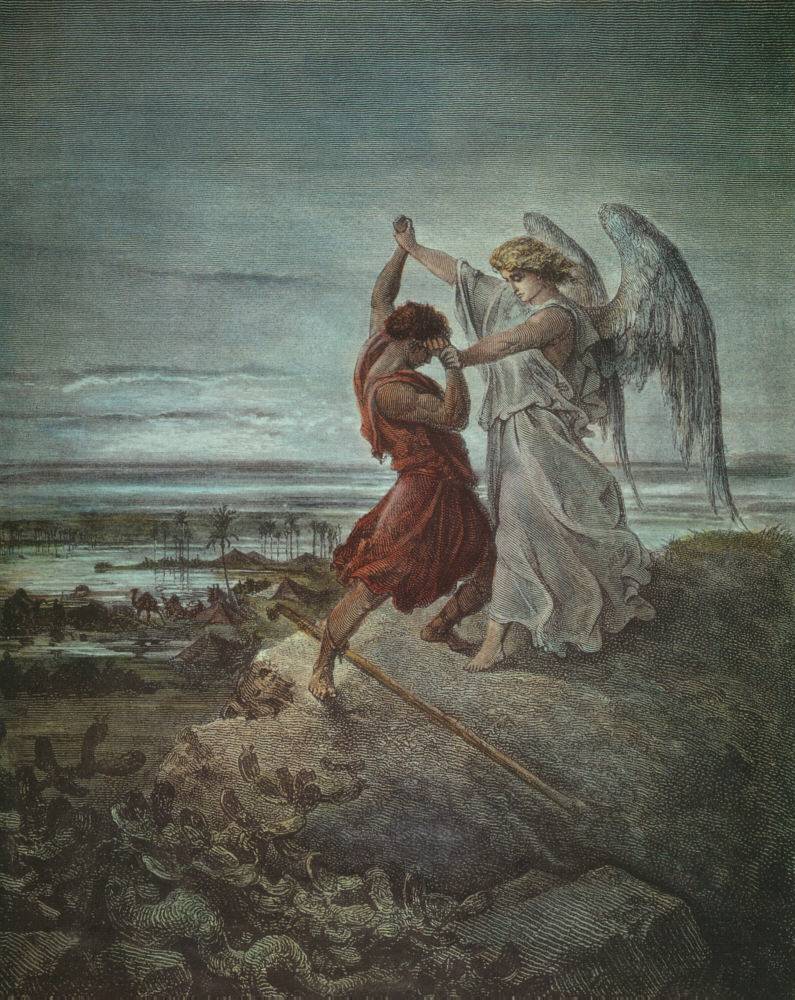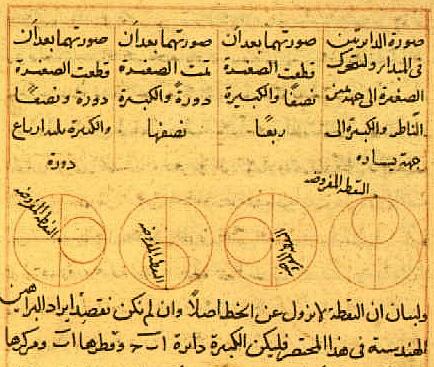|
Nar As-samum
''Nār as samūm'' (, meaning "fire of poison"; also spelled ''Simoom'' or ''Semum''; from the root ''s-m-m'', "to poison") is a concept in Islam referring to a type of infernal fire or hot wind. The term is associated with a specific type of storm found in the deserts of the Arabian Peninsula, called simoom. According to the Quran, the damned will be tormented in ''samūm'', and demons are said to be created from ''samūm''. Etymology The term ''Samūm'' derives from the root ''s-m-m'' , which means "to poison". It is also used of referring to a hot, dusty desert wind. In Talmudic and post-Talmudic literature and Bedouins beliefs, the wind of Samum became associated with a demon. Johann Gottfried Eichhorn relates the term to the three days of darkness in Exodus. Accordingly, the darkness comes just with the tempest of Samum. In Islamic traditions, it is usually interpreted as a kind of fire, which penetrates through the skin of human body in contrast to ''marijin min na ... [...More Info...] [...Related Items...] OR: [Wikipedia] [Google] [Baidu] |
Semitic Root
The roots of verbs and most nouns in the Semitic languages are characterized as a sequence of consonants or " radicals" (hence the term consonantal root). Such abstract consonantal roots are used in the formation of actual words by adding the vowels and non-root consonants (or "transfixes"), which go with a particular morphological category around the root consonants, in an appropriate way, generally following specific patterns. It is a peculiarity of Semitic linguistics that many of these consonantal roots are triliterals, meaning that they consist of three letters (although there are a number of quadriliterals, and in some languages also biliterals). Such roots are also common in other Afroasiatic languages. While Berber mostly has triconsonantal roots, Chadic, Omotic, and Cushitic have mostly biconsonantal roots; and Egyptian shows a mix of biconsonantal and triconsonantal roots. Triconsonantal roots A triliteral or triconsonantal root (; , ';, '; , ') is a root containing ... [...More Info...] [...Related Items...] OR: [Wikipedia] [Google] [Baidu] |
Ibn Abbas
ʿAbd Allāh ibn ʿAbbās (; c. 619 – 687 CE), also known as Ibn ʿAbbās, was one of the cousins of the Prophets and messengers in Islam, prophet Muhammad. He is considered to be the greatest Tafsir#Conditions, mufassir of the Quran, Qur'an. He was the son of Abbas ibn Abd al-Muttalib, an uncle of Muhammad, and a nephew of Maymunah bint al-Harith, who later became Muhammad's wives, Muhammad's wife. During the early struggles for the caliphate he supported Ali, and was made governor of Basra. He withdrew to Mecca shortly afterwards. During the reign of Mu'awiya I he lived in Hejaz and often travelled to Damascus. After Mu'awiya I died in 680 CE he migrated to Taif, At-Ta'if, where he is resting from around 687 CE. 'Abd Allah ibn Abbas was highly regarded for his knowledge of traditions and his critical interpretation of the Qur'an. From early on, he gathered information from other companions of Muhammad and gave classes and wrote commentaries. Biography Family He was the t ... [...More Info...] [...Related Items...] OR: [Wikipedia] [Google] [Baidu] |
Adam
Adam is the name given in Genesis 1–5 to the first human. Adam is the first human-being aware of God, and features as such in various belief systems (including Judaism, Christianity, Gnosticism and Islam). According to Christianity, Adam sinned in the Garden of Eden by eating from the tree of the knowledge of good and evil. This action introduced death and sin into the world. This sinful nature infected all his descendants, and led humanity to be expelled from the Garden. Only through the crucifixion of Jesus, humanity can be redeemed. In Islam, Adam is considered '' Khalifa'' (خليفة) (successor) on earth. This is understood to mean either that he is God's deputy, the initiation of a new cycle of sentient life on earth, or both. Similar to the Biblical account, the Quran has Adam placed in a garden where he sins by taking from the Tree of Immortality, so loses his abode in the garden. When Adam repents from his sin, he is forgiven by God. This is seen as a guidan ... [...More Info...] [...Related Items...] OR: [Wikipedia] [Google] [Baidu] |
Seraph
A seraph ( ; pl.: ) is a celestial or heavenly being originating in Ancient Judaism. The term plays a role in subsequent Judaism, Islam and Christianity. Tradition places seraphim in the highest rank in Christian angelology and in the fifth rank of ten in the Jewish angelic hierarchy. A seminal passage in the Book of Isaiah () used the term to describe six-winged beings that fly around the Throne of God crying " holy, holy, holy". This throne scene, with its triple invocation of holiness, profoundly influenced subsequent theology, literature and art. Its influence is frequently seen in works depicting angels, heaven and apotheosis. Seraphim are mentioned as celestial beings in the semi-canonical Book of Enoch and the canonical Book of Revelation. Origins and development In Hebrew, the word ''saraph'' means "burning", and is used seven times throughout the text of the Hebrew Bible as a noun, usually to denote " serpent", twice in the Book of Numbers, once in the B ... [...More Info...] [...Related Items...] OR: [Wikipedia] [Google] [Baidu] |
Pirke De-Rabbi Eliezer
Pirkei de-Rabbi Eliezer (, 'Chapters of Rabbi Eliezer'; abbreviated , 'PRE') is an aggadic-midrashic work of Torah exegesis and retellings of biblical stories. Traditionally, the work is attributed to the tanna Eliezer ben Hurcanus and his school. Modern research suggests that the text is pseudepigraphic from the Geonic period of the eighth century, written in or near the Land of Israel. First chapters and attribution to Eliezer Medieval scholarly texts also referred to ''Pirkei De-Rabbi Eliezer'' as ''Pirkei DeRabbi Eliezer HaGadol'' and as '' Baraita DeRabbi Eliezer''. Whereas medieval scholars attributed the work to the Tanna Eliezer ben Hyrcanus, Abraham Zacuto wrote, "it is well known that although it is attributed to Rabbi Eliezer, it was written by later generations". Subsequently, research by Leopold Zunz claims that ''Pirkei DeRabbi Eliezer'' is an pseudepigraphic work. The first two chapters of the work are dedicated to the story of Eliezer ben Hyrcanus's approach ... [...More Info...] [...Related Items...] OR: [Wikipedia] [Google] [Baidu] |
Samael
Samael (; , ''Sammāʾēl'', "Venom of God"; , ''Samsama'il'' or , ''Samail''; alternatively Smal, Smil, Samil, or Samiel) is an archangel in Talmudic and post-Talmudic tradition; a figure who is the accuser or adversary (Satan#Judaism, Satan in the Book of Job), seducer, and destroying angel (Bible), destroying angel (in the Book of Exodus). Although many of his functions resemble the Christian notion of Satan, to the point of being sometimes identified as a fallen angel, he is not necessarily evil, since his functions are also regarded as resulting in good, such as destroying sinners. He is considered in Midrashic texts to be a member of the heavenly host with often grim and destructive duties. One of Samael's most significant roles in Jewish lore is that of the main Personifications of death, angel of death and the head of ''satans''. He appears frequently in the story of the Garden of Eden and engineered the fall of Adam and Eve with a snake in writings during the Second T ... [...More Info...] [...Related Items...] OR: [Wikipedia] [Google] [Baidu] |
Midrash
''Midrash'' (;"midrash" . ''Random House Webster's Unabridged Dictionary''. ; or ''midrashot'') is an expansive Judaism, Jewish Bible, Biblical exegesis using a rabbinic mode of interpretation prominent in the Talmud. The word itself means "textual interpretation", "study", or "exegesis", derived from the root verb (), which means "resort to, seek, seek with care, enquire, require". Midrash and rabbinic readings "discern value in texts, words, and letters, as potential revelatory spaces", writes the Hebrew scholar Wilda Gafney. "They reimagine dominant narratival readings while crafting new ones to stand alongside—not replace—former readings. Midrash also asks questions of the text; sometimes it provides answers, sometimes it leaves the reader to answer the questions". Vanessa Lovelace defines midrash as "a Jewish mode of int ... [...More Info...] [...Related Items...] OR: [Wikipedia] [Google] [Baidu] |
Science In The Medieval Islamic World
Science in the medieval Islamic world was the science developed and practised during the Islamic Golden Age under the Abbasid Caliphate of Baghdad, the Caliphate of Córdoba, Umayyads of Córdoba, Spain, Córdoba, the Abbadid dynasty, Abbadids of Seville, the Samanid Empire, Samanids, the Ziyarid dynasty, Ziyarids and the Buyid dynasty, Buyids in Persia and beyond, spanning the period roughly between 786 and 1258. Islamic scientific achievements encompassed a wide range of subject areas, especially Astronomy in the medieval Islamic world, astronomy, Mathematics in medieval Islam, mathematics, and Medicine in the medieval Islamic world, medicine. Other subjects of scientific inquiry included Alchemy and chemistry in medieval Islam, alchemy and chemistry, botany and agronomy, Geography and cartography in medieval Islam, geography and cartography, Ophthalmology in medieval Islam, ophthalmology, pharmacology, Physics in the medieval Islamic world, physics, and zoology. Medieval Isla ... [...More Info...] [...Related Items...] OR: [Wikipedia] [Google] [Baidu] |
Amr Ibn Dinar
Amr ibn Dinar (, ) was a seventh-century Muslim jurist and hadith transmitter from the ''tabi'un'' who served as the mufti of Mecca. Biography Amr ibn Dinar's exact date of birth is unknown, but Islamic biographical dictionaries estimate it to be around . He was a ''mawla'' of either Banu Maddhij or the Banu Jumah. In his early years, he attended the study circles of Ibn Abbas' students, possibly in Mecca and Ta'if. He later studied under Ata ibn Abi Rabah and Tawus ibn Kaysan and was regarded positively, the latter encouraging his son to study under him. He gained renown as a scholar by the beginning of the eighth century and was offered the position of ''mufti'' of Mecca by the Umayyads after the death of Ata. Although he initially refused, he accepted after being offered the post a second time following the death of Ata's successor, Qays ibn Sa'd. Amr's most prominent student was Sufyan ibn ʽUyaynah Abū Muḥammad Sufyān ibn ʽUyaynah ibn Maymūn al-Hilālī al-Kū ... [...More Info...] [...Related Items...] OR: [Wikipedia] [Google] [Baidu] |
Ibn Abbas
ʿAbd Allāh ibn ʿAbbās (; c. 619 – 687 CE), also known as Ibn ʿAbbās, was one of the cousins of the Prophets and messengers in Islam, prophet Muhammad. He is considered to be the greatest Tafsir#Conditions, mufassir of the Quran, Qur'an. He was the son of Abbas ibn Abd al-Muttalib, an uncle of Muhammad, and a nephew of Maymunah bint al-Harith, who later became Muhammad's wives, Muhammad's wife. During the early struggles for the caliphate he supported Ali, and was made governor of Basra. He withdrew to Mecca shortly afterwards. During the reign of Mu'awiya I he lived in Hejaz and often travelled to Damascus. After Mu'awiya I died in 680 CE he migrated to Taif, At-Ta'if, where he is resting from around 687 CE. 'Abd Allah ibn Abbas was highly regarded for his knowledge of traditions and his critical interpretation of the Qur'an. From early on, he gathered information from other companions of Muhammad and gave classes and wrote commentaries. Biography Family He was the t ... [...More Info...] [...Related Items...] OR: [Wikipedia] [Google] [Baidu] |
Barzakh
Barzakh (Arabic: برزخ) is an Arabic word meaning "obstacle", "hindrance", "separation", or "barrier". In Islam, it denotes a place separating the living from the hereafter or a phase/"stage" between an individual's death and their resurrection in "the Hereafter". It is also considered as a place where souls rest until the day of judgement. It bears resemblance to the intermediate state in Christianity. Some scholars believe that good Muslims will have a heavenly experience during this time, and sinners will experience suffering; while some Shia scholars believe the experience will not be like the physical pain or pleasure of the temporal world. Scholars have different definitions of ''Barzakh''. According to Ghazali, Barzakh may be the place for those who go neither to hell nor to heaven. According to Ibn Hazm, Barzakh is also the place for unborn souls, which are elsewhere described as residing in the lowest of the seven heavens, where an angel blows them into the wombs ... [...More Info...] [...Related Items...] OR: [Wikipedia] [Google] [Baidu] |
Abu Ubaidah Ibn Al-Jarrah
ʿĀmir ibn ʿAbd Allāh ibn al-Jarrāḥ (; 583–639), better known as Abū ʿUbayda () was a Muslim commander and one of the Companions of the Prophet. He is mostly known for being one of the ten to whom Paradise was promised. He was commander of a large section of the Rashidun Army during the time of the Rashid Caliph Umar and was on the list of Umar's appointed successors to the Caliphate, but died during the Plague of Amwas in 639 before Umar. Ancestry and early life Abu Ubayda belonged to the al-Harith ibn Fihr clan, also called the Balharith, of the Quraysh tribe. The clan was settled in the lower quarter of Mecca, a town in the Hejaz (western Arabia) and home of the Quraysh. During the pre-Islamic period (pre-620s), the Balharith were allied to the Banu Abd Manaf (the ancestral clan of the Islamic prophet Muhammad) in the Mutayyabun faction, against the other Qurayshite clans headed by the Banu Abd al-Dar. Abu Ubayda's father Abd Allah was among the chiefs of th ... [...More Info...] [...Related Items...] OR: [Wikipedia] [Google] [Baidu] |





